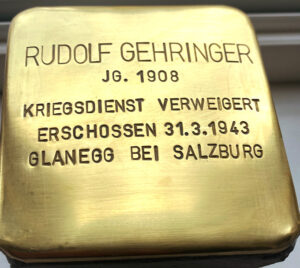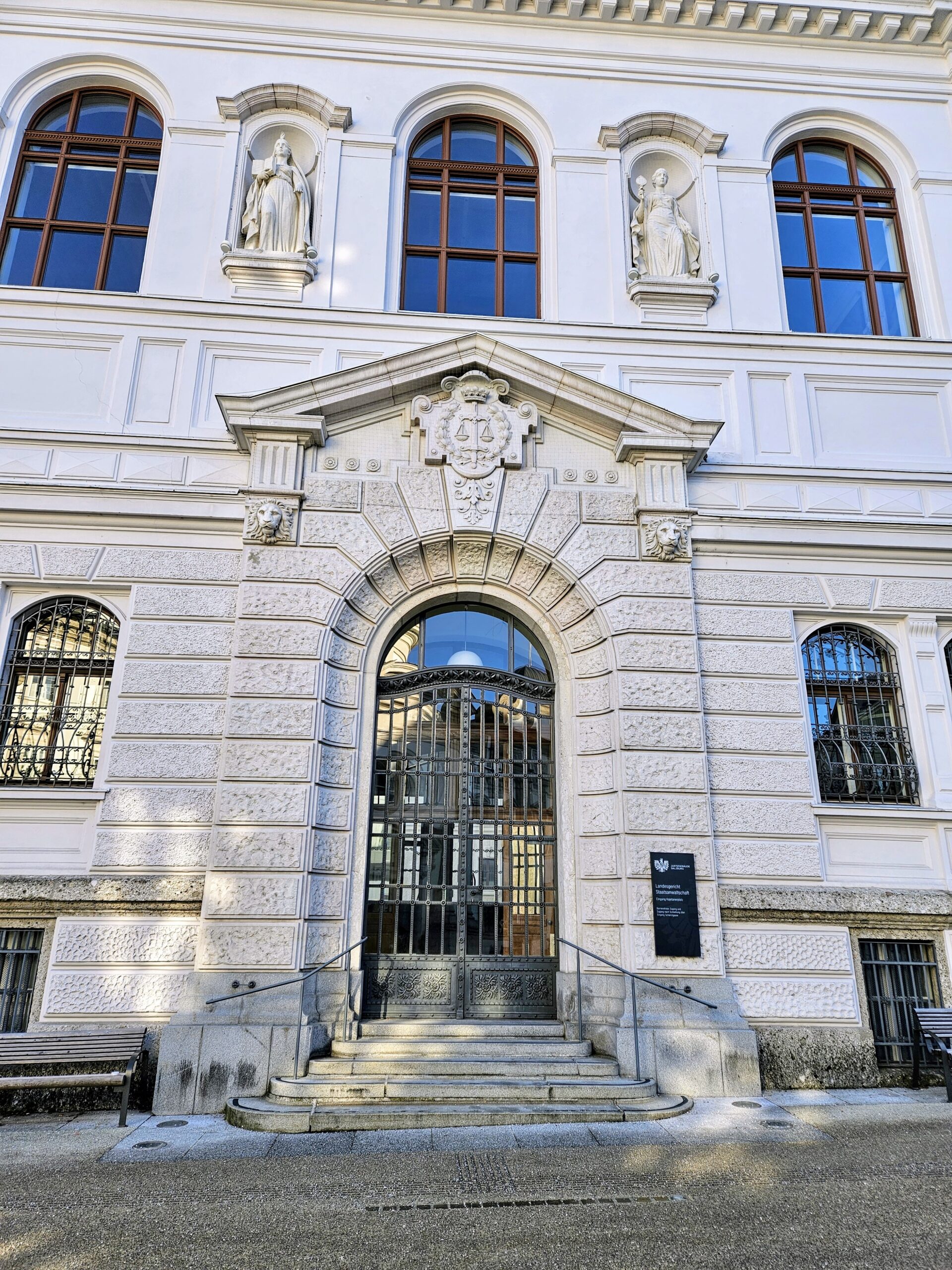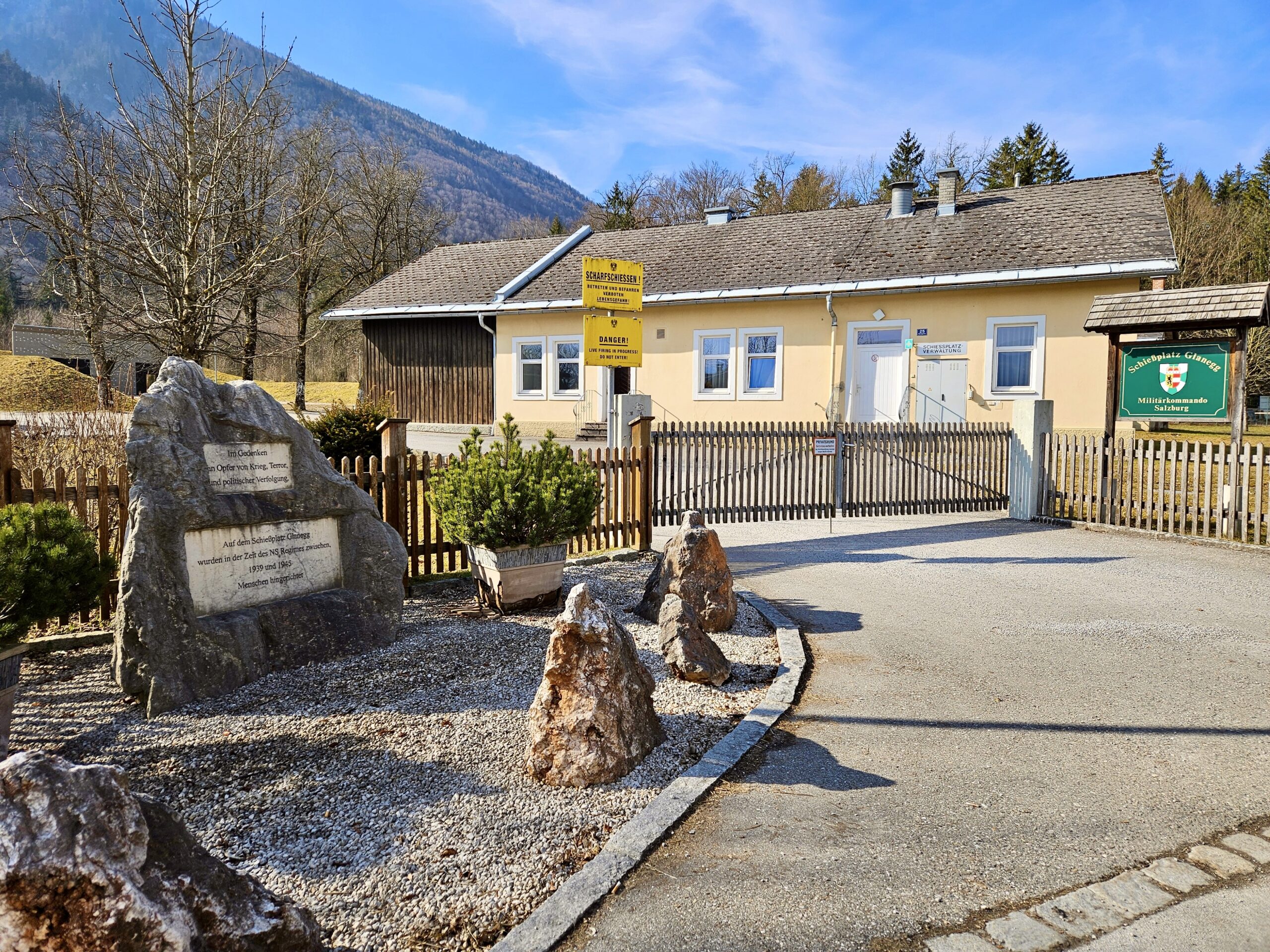Rudolf GEHRINGER was born on November 14, 1908 in Linz, Upper Austria. He was a son of Pauline Gehringer, née Kolp, and her husband Johann Gehringer, a hairdresser.
We know little about the life of their son which was ended in Salzburg by the Nazi dictatorship. Rudolf GEHRINGER was a commercial clerk who had been married to Hilde Schauer since May 1938 and lived with her in Wiener Neustadt south of Vienna.
Their marital happiness didn’t last long as the two of them fell into the clutches of the Gestapo and wartime justice in 1942. According to a November 11, 1942 arrest record from the city of Graz:
[Mountain Infantry Trooper] Gehringer Rudolf has been a deserter since August 2, 1942. With forged identity papers, Gehringer has acted as a traveling salesman of thermometers in various cities. He threw away his uniform. His wife, who accompanied him when he was arrested, was temporarily held by the state police on suspicion of espionage until a further decision was made.
The »deserter« Rudolf GEHRINGER had been a German Wehrmacht soldier in a mountain infantry unit that was included in Military District XVIII, which was headquartered in Salzburg. It is not known why Rudolf GEHRINGER evaded military service.
All we have is a previously unnoticed document of wartime justice which only provides information about his violent death in Salzburg.
It reports that the death penalty imposed on 34-year-old Rudolf GEHRINGER by a court-martial of Division 188 had been carried out at the military firing range in Glanegg near Salzburg on March 31, 1943 at 6:35 a.m. – in military jargon: »Execution of the death sentence«.
Towards the end of the war the military courts-martial moved to protect their hanging judges by destroying a large part of their files. As a result, Rudolf GEHRINGER and many other victims of the military courts-martial disappeared from the historical record and do not appear in the 1991 publication Resistance and Persecution in Salzburg 1934-1945.
Finally, it should be noted that his widow, who lived in Wiener Neustadt, was able to survive the years of terror.
But as the survivor of a deserter from the German Wehrmacht she was not entitled to victim support compensation in liberated Austria.
Sources
- Archives of the diocese of Linz and the arch-dioceses of Vienna/Lower Austria: Register books
- The Austrian State Archives and the Documentation Archive of the Austrian Resistance: Report from the Wehrmacht prison in Graz dated November 11, 1942
- Court Martial of Division 188: report to the Wehrmacht Information Office
Translation: Stan Nadel
Stumbling Stone
Laid 27.09.2022 at Salzburg, Kajetanerplatz 2






